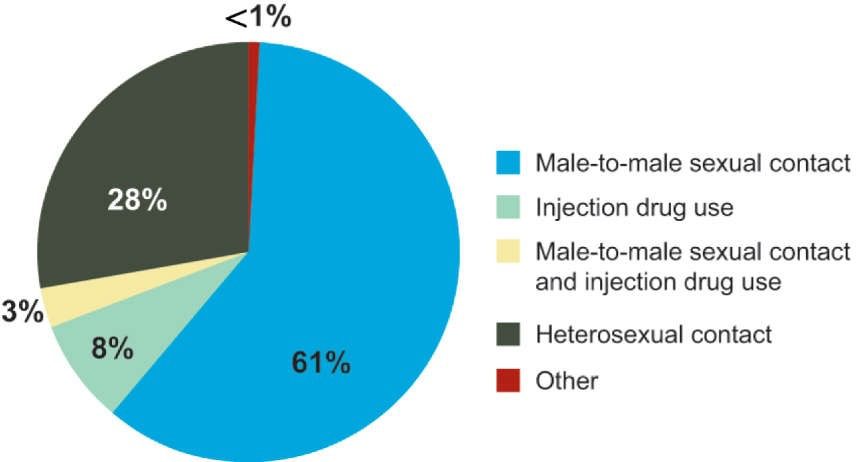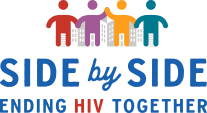The first recorded report about HIV was published by the CDC in 1981. Unfortunately, very little was known about HIV and AIDS, which led to many misunderstandings, falsehoods, and dangerous stigma. Discrimination towards people living with HIV and AIDS peaked during the epidemic in the 80s and early 90s – but HIV stigma is still apparent today.
Thankfully, modern science has led to a significant decline in the number of new HIV diagnoses every year. This is largely due to effective HIV prevention strategies like PrEP and PEP, as well as an increase in resources like educational organizations and HIV testing clinics.

However, HIV stigma and discrimination still exist and impact people every single day. Perhaps one of the most well-known examples of HIV stigma involved Ryan White in 1985. White contracted HIV at 13 through a blood transfusion, and the school he attended refused to allow him on campus because of such sever discrimination. This resulted in a court case broadcasted on national news, which ultimately helped spread awareness and facts about HIV to the public.
We still see misinformation and stigmatizing language about HIV that puts people at risk of transmission. Even though we now have medications to prevent and treat HIV, stigma still prevents millions of people from getting tested or protecting themselves.
Here are three ways that you can help to fight HIV stigma:
Get Tested for HIV Regularly
HIV is transmitted through contact with bodily fluids such as blood, semen, and vaginal and anal fluids. HIV exposure is most commonly attributed to condomless sexual intercourse, primarily male-to-male or male-to-female. But HIV can also be transmitted through shared injection needles or, in less common cases, through blood transfusions or from mother to child during birth.

Everyone should get tested for HIV to learn their status. Getting tested for HIV should be a part of your annual health screening to be sure of your current status. It is estimated that less than 40% of the US population has ever had an HIV test.
So how does getting tested for HIV help to fight the stigma? Well, an unfortunately common misconception regarding HIV is that it only affects certain marginalized groups. People who do not fall into these categories often assume they are not at risk of HIV transmission and therefore do not get tested.
However, there should never be a sense of shame or fear around getting an HIV test. Knowing your status and encouraging your sexual partners to learn theirs is one of the best ways to stop HIV stigma. Getting tested for HIV is easier than you may expect – and many local clinics offer free or low-cost testing, even if you don’t have insurance.
Educate Yourself About HIV
Sadly, many are misinformed about HIV and AIDS through the media, non-factual resources, or simple hearsay. These falsehoods about HIV can be quite harmful to people currently living with HIV and those at risk. Some of the most common myths regarding HIV and AIDS include:
- Thinking that you can be exposed to HIV through casual contact, such as touching, hugging, or kissing.
- HIV only affects certain sexual orientations and cannot be transmitted through heterosexual contact.
- People with HIV cannot have children.
- HIV and AIDS are the same things.
- HIV always leads to AIDS and you cannot live a normal, healthy life with the virus.
All of these statements are completely inaccurate and only promote more stigma about HIV.
The truth is that HIV is not transmitted through skin-to-skin contact or saliva, and you can be at risk of HIV transmission regardless of your sexual orientation or gender. Basing your beliefs and perspective around scientific facts can make it much easier to discuss HIV and support others.
Plus, thanks to modern medicine like antiretroviral therapy (ART), people who are HIV+ can live healthy, long lives. This medication helps to suppress the viral load down to an undetectable level, meaning it cannot be transmitted to another person.
Learning the facts about HIV will help you to counter incorrect information and educate others and be an advocate for reducing HIV stigma.
Consider Going on PrEP if You are Sexually Active
People are most commonly exposed to HIV through unprotected (i.e. condomless) sexual intercourse. If you are sexually active and you do not know your or your partner’s HIV status, you could be at risk for transmission.
Apart from using condoms and getting tested regularly, going on PrEP is one of the most effective ways to prevent HIV transmission. PrEP can help decrease the risk of HIV transmission from sexual contact by up to 99%.
Sadly, there is a social stigma toward HIV and PrEP, leading many people to believe that this is only an option for certain demographics. However, several forms of PrEP are approved for all genders, including transsexual males and females and people who identify as non-binary/gender diverse. To start PrEP, you will need to first meet with a doctor to make sure it is the right fit for you and to check your current HIV status. You can learn more about PrEP from SIDE by SIDE!
Back to You
We can all play a part in the effort to end HIV stigma and discrimination by learning more about prevention, transmission, and treatment options. Re-educating yourself and others is the first step, as this will help stop misinformation from spreading. You can be an advocate for reducing HIV stigma by opening up discussions and conversations – and by sharing facts to help others learn.
SIDE by SIDE wants to do all we can to help create change in stigma around HIV and AIDS by connecting people to organizations and resources. If you have any questions about HIV, AIDS, PrEP, or treatment, please reach out to our team. We’d love to help you learn more!





